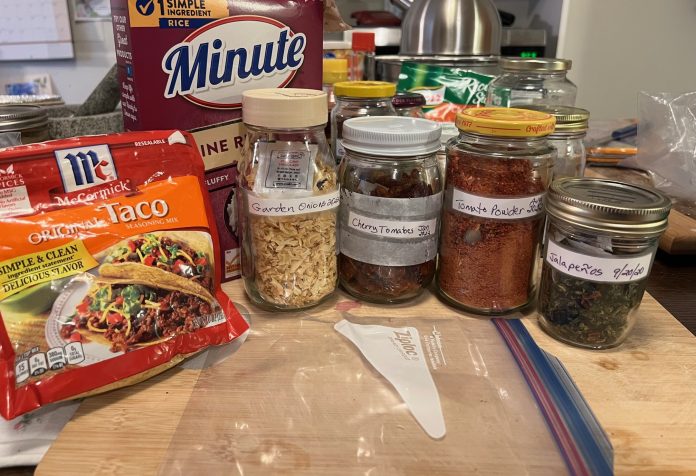
Even though it’s getting a little cold for camping right now, planning for what foods you would take on such a trip can be good preparation for a potential bug-out situation. Dealing with cooking for one person while camping can be a challenge, but with a little planning and imagination you can have healthy single-serve meals which don’t cost and arm and a leg and don’t cause food waste.
Cooking Methods
I have done very little campfire cooking on my jaunts, mostly because it can be a pain to mess with and most designated campgrounds here in the east don’t want you to bring your own wood due to risk of transporting pests such as Spotted Lanternfly . At eight bucks or more per bundle, buying firewood on-site can get expensive fast – if it’s even available or there isn’t a burn ban.
I have therefore mostly defaulted to cooking on a portable camp stove with bottled fuel for the sake of convenience. A positive trade-off is that you get a lot of BTU’s for the space it takes up, and there is no “fire-building” to eat up time if you are in a hurry or it’s raining or you are really, really hungry. For me, a single burner butane stove works well for car camping. I’m not cooking breakfast for a family of five or a troop of scouts, and simple one-pot meals are my go-to. I also personally prefer the stability of a low, flat burner surface rather that balancing a pan up on a small diameter backpacking stove. But that’s just me. I tried the candle stove on my adventures, and although it does work, it is much slower than butane so I will save it for a back-up if I’m out of fuel.
Preparing Food Ahead of Time
Actual food-wise, campfire cooking usually involves fresh ingredients and a cooler for meat, eggs, etc. On the other end of the spectrum, freeze-dried backpacking type meals are very convenient although they often lose something in the flavor and texture department. They are also $uper Expen$ive and you still need a way to boil water.
The happy medium for me is using my home-dehydrated foods and a few canned goods. I don’t need a big cooler as this stuff is shelf stable. But I do need to make sure I have sufficient water to rehydrate my meals. It’s all good practice for a potential bug-out in case of emergency.
Yes, they make 12-volt fridges to plug into your car, and I have seen YouTubers with a power station large enough to run electric hot plates and coffeemakers (generating heat takes A LOT of power) but that level of power station is hugely expensive and very heavy. Whereas a butane burner costs about 30 bucks. I run a budget operation at this point.
But back to the food. Because I go camping on a budget I try to eat from my existing shelf stash without investing in specialty food items. I also supplement with some commercial shelf stable items. I’m talking cheap small serving things like single serve Spam, chicken Vienna sausages, some Knorr packaged rice mixes, and even a couple Hormel microwave bowls. It’s good practice to test out your food plan for SHTF or bug-out/evacuation scenarios. I’ve tried out a few different kinds of meals at this point, and these are things that have worked for me so far in cooking for a single person.
-Divide up pre-packaged rice mixes into serving size ziploc bags and adjust the water added accordingly. Write that volume on the bag so it’s there when you need to use it. This saves making more than you can eat and having to keep leftovers cool.
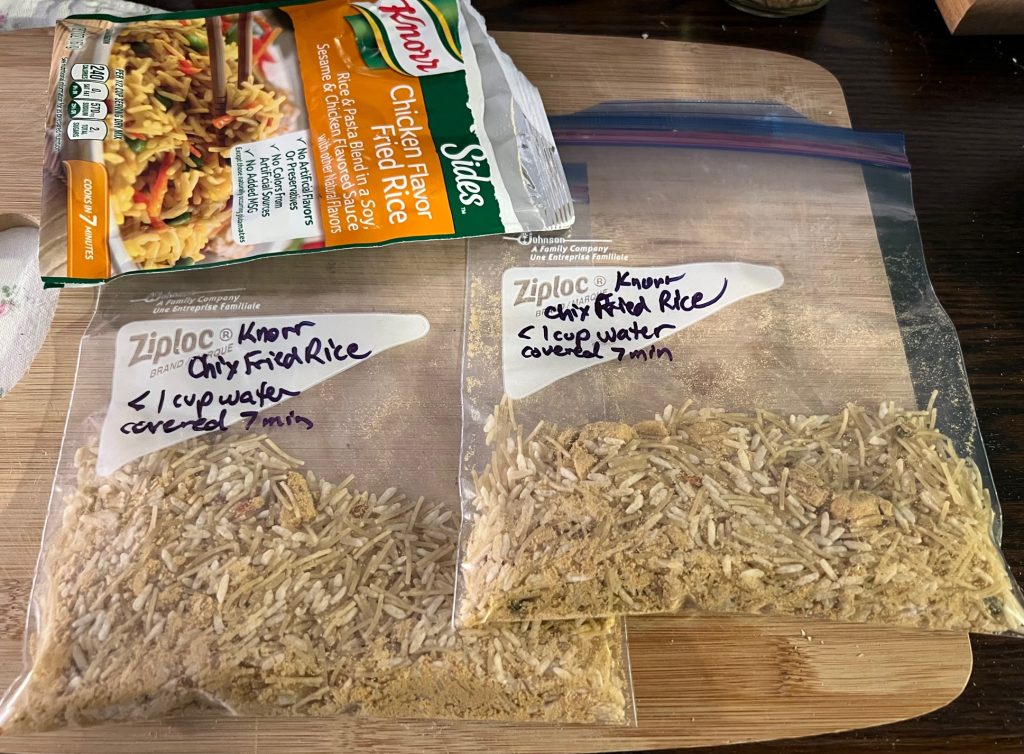
-Home-can some meats in individual servings. I have found that canning turkey and venison in wide-mouth half-pint jars makes a nice single serving for me to take camping. Or you can use commercially canned meats – they are just more expensive.
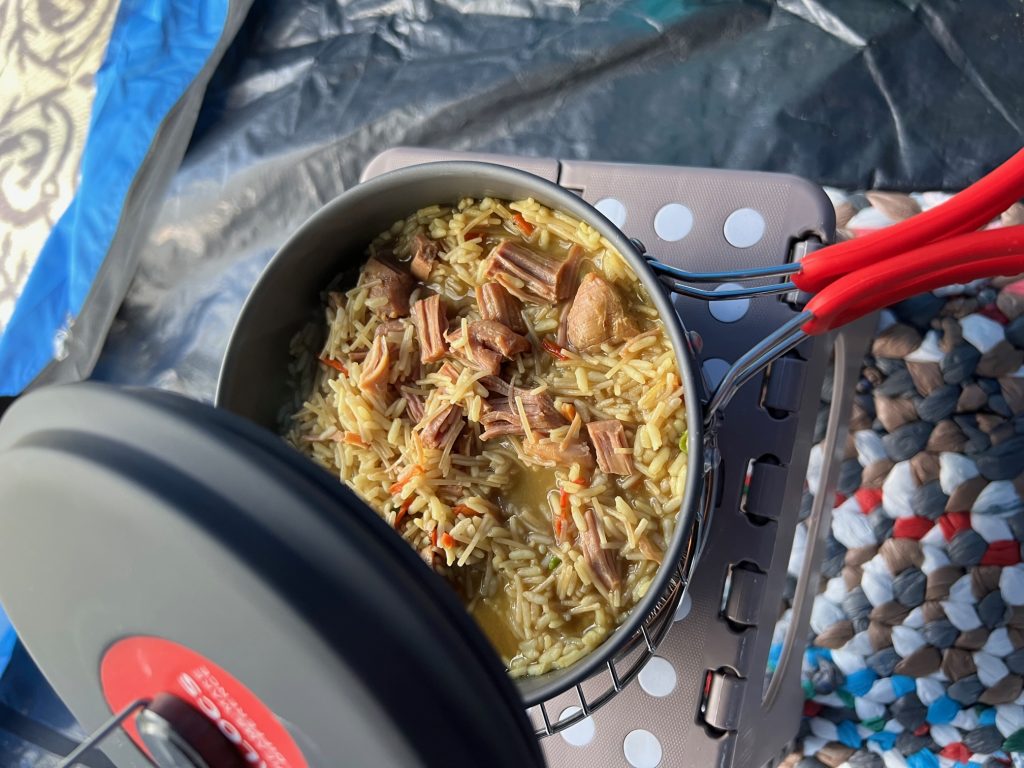
-Dollar store carries single slice packets of Spam. It’s more expensive that way, but I also then don’t have leftovers that I need to keep cool.
-Dollar store carries mini cans of tuna salad and ham salad for lunches. Also more expensive, but also no leftovers. I HATE wasting food and these things are trade-offs in an emergency.
-Dollar store has small shelf-stable packets of Velveeta (no refrigeration) which are great for quick Mac n cheese or nachos or a Tex-mex rice bowl.
-Minute Rice saves stove fuel and can be pre-measured out in a ziploc for a single serving. Again, write the volume of water needed on the bag.
-Adding home dehydrated shredded or powdered veggies can boost the nutrition of that minute rice. Add a little extra water to take those into account.
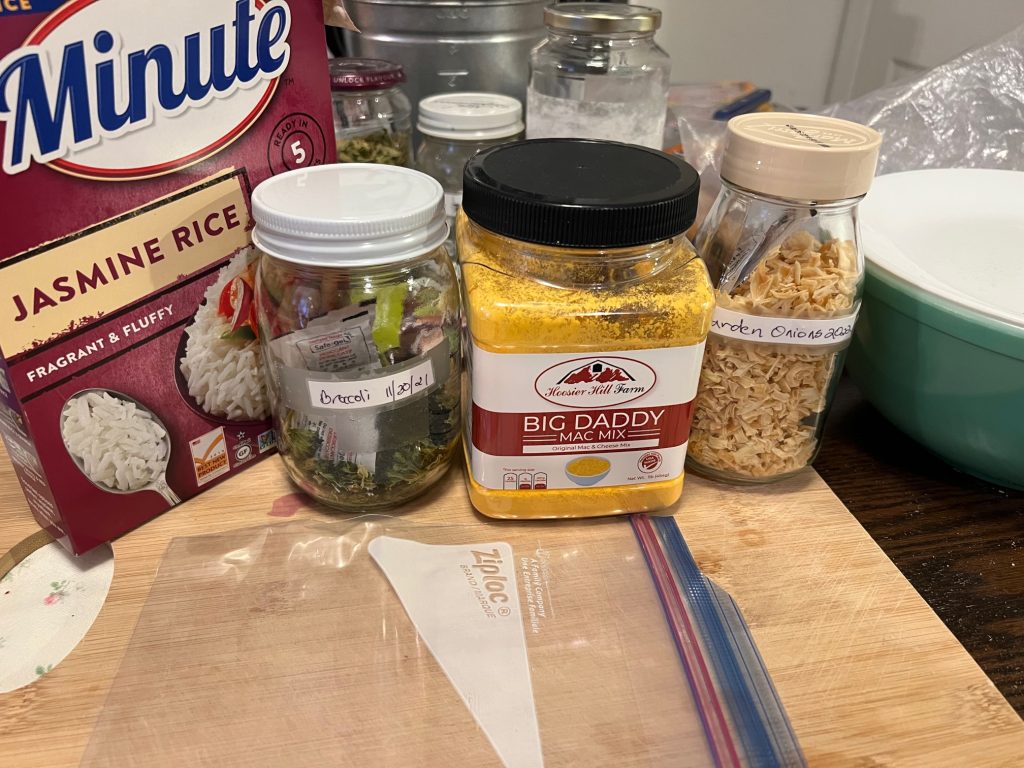
-Home dehydrated hash browns can also be pre-measured and mixed with other dried veggies ( like peppers and onions) for breakfast hash.
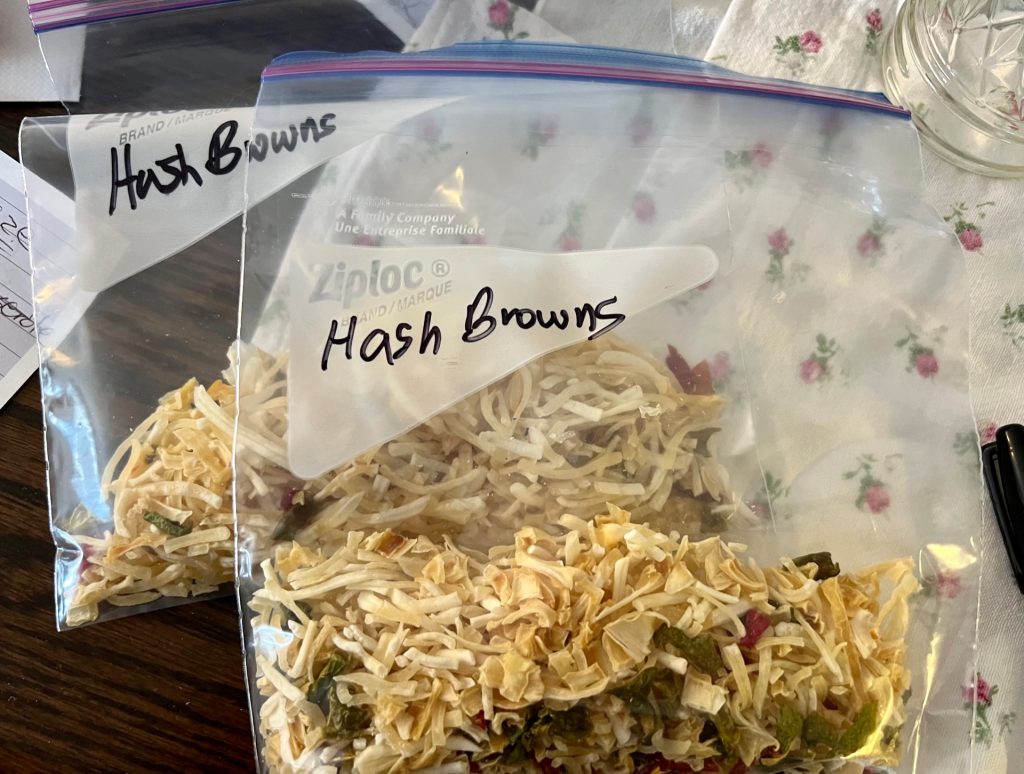
-Spice mixes (like taco seasoning or powdered bullion) can be pre-measured and put in a pill bottle for one small batch.
-Consider individual packets of soy sauce and condiments to save cooler space. I made “salad dressing” out of a packet of malt vinegar from a fast food joint, combined with a packet of duck sauce from another joint and a squirt of olive oil I had along for cooking, shook it up in a pill bottle and it was delicious!
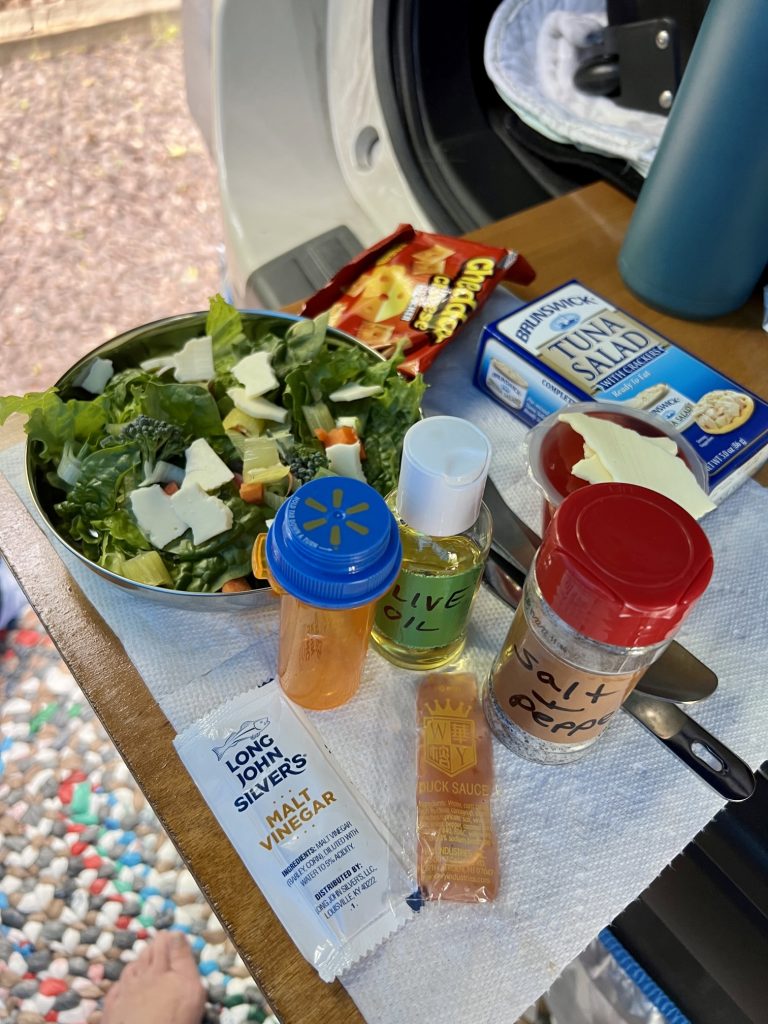
Take these suggestions and use your imagination this winter for ways to utilize your home-dehydrated and shelf stable food stash to make portable simple meals for camping or emergencies.



